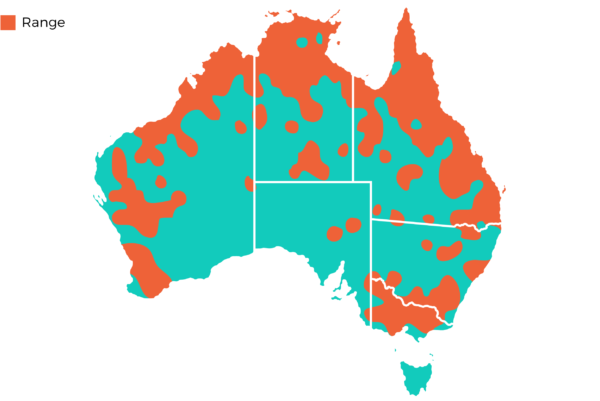Description
The Bush Stone-curlew, or Bush Thick-knee, is a large, slim, mainly nocturnal, grounddwelling bird. It is mostly grey-brown above, streaked with black. It is whitish below with clear, vertical black streaks. The bill is small and black, and the eye is large and yellow, with a prominent white eyebrow.
Both sexes are similar. Young Bush Stonecurlews are similar in appearance to the adults, but are paler, and a little browner in colour. Bush Stone-curlews are nocturnal birds (night birds), doing all their feeding and other activities at night.
Distribution
The range of the Bush Stone-curlew extends throughout Australia.

Lifespan
20 - 30 years.
The Bush Stone-Curlew is listed as Near Threatened on the IUCN list.
Size
50 - 60 cm in length and 625 - 670g in weight.
Diet
The Bush Stone Curlew feeds on insects, molluscs, small lizards, seeds and occasionally small mammals. Feeding takes place at night. During the breeding season, nesting birds will search for food in the vicinity of the nest site, while at other times, birds may travel large distances. All food is taken from the ground.
Habitat
The Bush Stone Curlew often live in open bushland areas throughout Australia, they are a relatively common species of bird but are rarely seen due to their excellent camouflage.
Breeding
Bush Stone-curlews have a remarkable courtship dance. Individuals stand with their wings outstretched, their tail upright and their neck stretched slightly forward. The birds will stamp their feet up and down, like a soldier marking time. This courtship ritual is repeated for an hour or more at a time and is accompanied by loud and constant calling.
Eggs are laid in a shallow scrape in the ground and both adults share the incubation and care for the young.
麻鹬 | オーストラリアの鳥「カール」 | 마도요